PBX断裂力学行为研究进展
董天宝,韦兴文,张巍耀,甘海啸
(中国工程物理研究院化工材料研究所,四川 绵阳 621900)
PBX断裂力学行为研究进展
董天宝,韦兴文,张巍耀,甘海啸
(中国工程物理研究院化工材料研究所,四川 绵阳 621900)
从常用实验方法、细观断裂模式、宏观断裂力学以及动态断裂方面,概述了近年来国内外关于PBX断裂力学行为的研究状况;介绍了PBX宏观和细观断裂特征及表征手段;阐述了细观结构、力学特性、温度和加载率对PBX断裂行为的影响。指出应开展PBX细观微裂纹萌生和扩展、宏观起裂机理研究,及动态加载下PBX裂纹扩展行为研究,建立适合PBX材料特性的复合型断裂准则。附参考文献51篇。
固体力学;PBX;细观断裂;断裂力学;高聚物黏结炸药
引 言
高聚物黏结炸药(PBX)构件是武器实现毁伤打击的核心部件。在武器系统中,PBX除具备固有的爆轰性能外,常以承受载荷的结构件形式存在。一般认为,开裂是PBX力学失效的主要原因。PBX构件的开裂严重影响武器使用的可靠性。因此,对其断裂力学行为进行研究非常体要。
PBX在生产过程中会产生一些含空隙的微缺陷,这些微缺陷在外界环境(温度变化、振动、冲击等)的影响下很可能发展成为微损伤,进而形成微裂纹。PBX细观研究表明,微裂纹最容易出现黏结剂、黏结剂与炸药颗粒黏合面。裂纹一旦出现,裂纹尖端应力场将会重新分布。局部应力、局部强度及材料本身的缺陷等因素将导致微裂纹在裂纹尖端不断扩展,进而诱发宏观裂纹。PBX裂纹尖端区域材料承受着很大的应变,存在一定的失效损伤区域。当局部应变达到临界状态,随着黏结剂和炸药颗粒的脱粘失效,裂纹将进入失效损伤区域并进一步扩展。复杂荷载下PBX断裂失效,特别是裂纹形成以及扩展问题,具有重要的研究价值,受到国内外学者的广泛关注[1-4]。
由于材料本身表现出的非线性力学特性, PBX断裂力学行为研究是一个难点和热点。细观方面,综合考虑炸药晶体构型、晶体和黏结剂力学特性、体积配比等因素,国内外在PBX微裂纹形成和裂纹扩展路径方面开展较多研究。宏观方面,PBX断裂理论研究方法主要包括线弹性断裂力学和弹塑性/黏弹性断裂力学。目前线弹性断裂力学已经很好地应用于部分脆性PBX断裂研究中,PBX平面断裂韧性的实验测试技术已经相对较为完善。对于具有较强塑性/黏弹性的高聚物黏结炸药,如黏结剂体积分数较高的浇注型PBX,其弹塑性/黏弹性断裂力学问题更加复杂,相关研究工作也较少。随着高速相机等动态线监测技术的不断发展,高应变率下PBX动态断裂行为研究也在不断深入。本文对PBX细观断裂模式、宏观断裂力学和动态断裂的研究现状进行报道,并对今后的研究方向进行了展望。
1 常用实验方法
目前,应用于PBX断裂研究的实验方法包括:三点弯曲试验(Three-point Bending Test)、半圆盘三点弯曲试验(Semi-circular Bending Test)、紧凑拉伸试验(Compact Tension Test)、平台巴西圆盘试验(Flattened Brazilian Disc Test)等[5-6]。
PBX裂纹表征方法主要有扫描电子显微镜(SEM)法、光学显微镜法[7-9]。在微观尺度上,扫描电子显微镜可以表征黏结剂和炸药晶体之间微裂纹的萌生和扩展[7],如图1(a)所示。在细观尺度上,光学显微镜可以表征PBX的裂纹扩展路径[8],PBX微裂纹及裂纹扩展路径如图1(b)所示。
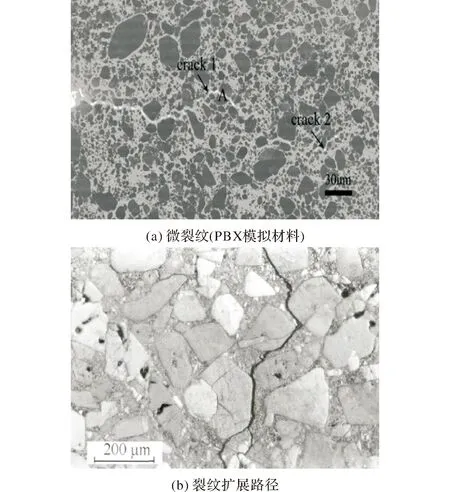
图1 PBX微裂纹及裂纹扩展路径Fig.1 Microcrack and crack propagation path in PBX
数字图像相关方法(Digital Image Correlation Method)由日本的Yamaguchi I[10]和美国的Peter W H和Ranson W F[11]在20世纪80年代提出,具有非接触、全场测量、光路简单、可以采用白光作为光源和对测量环境无特殊要求等优点,在PBX断裂研究方面已有较多应用。美国阿拉莫斯实验室研究者利用DIC方法,在PBX裂纹尖端位移、应变场及裂纹扩展速率等方面,取得了很好的研究成果,图2为PBX-9502带孔板压缩过程中裂纹尖端应变及裂纹扩展监测[12]。
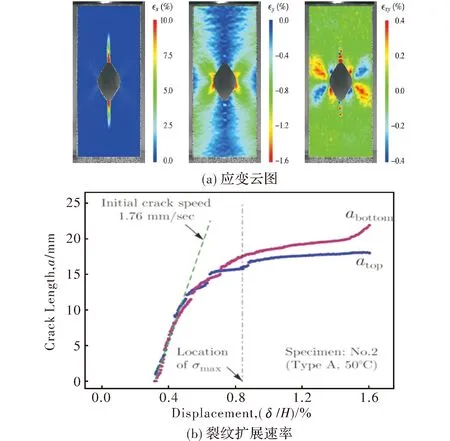
图2 基于DIC方法监测的应变云图及裂纹扩展速率Fig.2 Strain nephogram and crack growth rate monitored by DIC method
陈鹏万等[13]基于PBX代用材料半圆盘三点弯曲试验,结合SEM和DIC方法,实现了对PBX材料微区域应变场的测量,揭示了PBX材料损伤演化规律。研究表明,数字图像相关方法用于研究PBX材料细观尺度上的变形破坏是有效的。
2 PBX细观断裂模式及影响因素
PBX作为一类以高聚物黏结剂为连续相、高能混合颗粒炸药为分散相的非均质颗粒填充的复合材料,其力学行为表现出拉、压不对称性,温度、时间等参量的相关性,具有弹塑性、黏弹性等特点,具有非线性本构关系[14]。
PBX中炸药晶粒、黏结剂、晶粒-黏结剂界面的强度不同,因此加载方式对其细观破坏模式具有很大影响。压缩载荷下,PBX内部主要承力结构是炸药晶粒,细观破坏形式多表现为炸药晶粒断裂;拉伸载荷下,PBX的主要承力结构是炸药晶粒与黏结剂界面,由于界面强度小于炸药颗粒的强度,拉伸载荷下PBX细观破坏模式为炸药晶粒与黏结剂的界面脱粘,此外可能伴随黏结剂的拉断或撕裂[15-16]。因此,PBX在拉伸载荷下以晶粒界面断裂(沿晶断裂)为主,压缩载荷下以晶粒断裂(穿晶断裂)为主。
吴会民等[17]利用MTS机对固体推进剂、高聚物黏结炸药和B炸药进行了准静态实验。发现3者本构曲线都表现出非线性特性,高聚物黏结炸药的破坏形式为碎裂,而固体推进剂则是软化。表明在准静态条件下PBX体现出一定的脆性,而推进剂更多体现出黏弹性的特点。
PBX的力学性能还表现出强烈的温度与加载率相关性。李俊玲等[18]用MTS试验机对PBX进行准静态巴西试验,获得PBX在光学显微镜下的细观损伤形貌,结合高速摄影和数字图像相关分析技术得到了其变形和破坏过程。研究发现颗粒尺寸较大的晶体容易发生穿晶断裂,颗粒尺寸很小的晶体则容易发生界面脱粘。Wiegand D A和Gray G T等[19-20]研究了温度和应变率对PBX及其他含能材料变形破坏的影响。研究发现,当温度降低和应变率增加时,PBX断裂路径从黏结剂转到了炸药晶体。Lanzerotti M Y等[21]研究表明,Comp B炸药在低应变率下,其断裂主要沿晶粒边界。在高应变率下,晶粒会发生穿晶断裂。蔡宣明等[22]基于分离式霍普金压杆装置对PBX代用材料进行高应变率动态压缩实验,认为晶粒与黏结剂分离、晶体断裂是PBX代用材料动态压缩的主要细观损伤模式。Liu Z W等[23]在PBX代用材料准静态三点弯曲实验中发现,随着温度的升高,断裂模式从以剪切作用为主转变为剪切和拉伸复合作用,微观断裂模型从脆性断裂的穿晶断裂模式转变为界面脱粘的沿晶断裂模式。相关试验也证明,温度对PBX断裂韧性具有显著影响[24]。
3 PBX宏观断裂力学行为研究
3.1 线弹性断裂力学方法
自1921年Griffith A提出脆性固体材料断裂理论,后经Irwin G R推广至小范围屈服下的线弹性断裂力学理论[25-26],线弹性断裂力学在解析、数值与实验研究方面都取得了许多成果,广泛应用于疲劳裂纹扩展、蠕变和应力腐蚀裂纹扩展等方面的研究。美国劳伦斯利弗莫尔实验室(LLNL)的Hoffman D M[27]对LX-14和LX-19两种PBX的疲劳裂纹扩展进行了研究,获得了该型炸药疲劳寿命曲线,并预测了热应力疲劳寿命。
部分含能颗粒复合材料的断裂研究是基于线弹性断裂力学理论[28]。Palmer S J P等[29]通过巴西实验研究发现,对于体积分数很高的PBX炸药,即包含相对较多的脆性晶体,其材料破坏最可能的原因就是Griffith脆性断裂。罗景润、温茂萍等[30-31]利用金属材料平面应变断裂韧性实验标准,在室温准静态加载下,对高聚物黏结炸药的断裂韧性进行实验研究,测得了几种脆性较强PBX的平面应变断裂韧性,实验测量结果并不稳定。由于PBX的力学行为与金属材料有着很大的差别,能否借助金属材料平面应变断裂韧性的测试方法来研究PBX的断裂韧性,尚待进一步研究。Li M等[32]利用数字图像相关法(DIC)获取PBX三点弯曲裂纹尖端位移场,基于线弹性断裂力学理论,根据位移场与应力强度因子关系式,采用位移外推法计算得到PBX平面应变断裂韧性。线弹性理论计算与实验结果有着较好的趋势拟合。
3.2 弹塑性/黏弹性断裂力学方法
PBX发生开裂时,黏结剂、黏结剂与炸药颗粒的结合界面共同承受着裂纹尖端急剧增大的拉应力,这预示着裂纹尖端应力场体现更多的是黏结剂材料的塑性[6]。美国阿拉莫斯国家实验室的Liu C等[33-36]基于紧凑拉伸试验,对PBX-9501断裂研究发现,在裂纹萌生和扩展前,裂纹尖端有很大的损伤区域,在弹性变形和裂纹扩展过程之间存在应力桥接区域[33,36],如图3所示。他进一步将界面脱粘定律应用于实验监测中,成功解释了PBX裂纹尖端应力场的分布及脱粘现象。
国外PBX大多具有模量和强度低的特点,基于Liu C等关于PBX裂纹尖端存在较大屈服区的实验结果,Wiliamson D M等[37]认为针对材料非线性较强的PBX断裂研究,建议采用弹塑性断裂力学J-积分的分析方法[38]。对PBX-9501、EDC-37、EDC-32炸药的模拟材料开展断裂力学试验,获得了伴随裂纹扩展过程的J-积分阻力曲线(见图4),得出PBX的断裂性能主要取决于黏结剂材料的力学特性。然而,阿拉莫斯和利弗莫尔实验室研究者不认同此观点,依然采用线弹性断裂力学中的断裂韧性来研究PBX-9501、LX-17等炸药的断裂行为[39-41]。
固体推进剂作为一种刚粒复合含能材料,由于含能颗粒体积分数较低,具有更强的黏弹性力学特性,对黏弹性较强的浇注型PBX断裂行为研究具有一定的借鉴意义。美国空军实验室的Liu C T等[42-43]对固体推进剂裂纹萌生和扩展进行了长期研究。图5为裂纹尖端应变及扩展速率[42]。认为线弹性断裂力学适用于单相材料,对固体推进剂裂纹生长的研究应该采用黏弹性断裂力学方法。在不同应变率下,对表面裂纹尖端应变场、张开位移和裂纹生长行为的监测发现,固体推进剂裂纹尖端存在着狭长的三角形失效损伤区,建议采用黏弹性断裂力学的研究方法。周广盼等[44]对三点弯曲和紧凑拉伸试样进行断裂分析,观测到推进剂裂纹尖端的钝化过程,表现出黏弹性材料裂纹尖端的特点。测定了单边和双边穿透裂纹的HTPB固体火箭推进剂拉伸试样的裂纹启裂临界J-积分值。
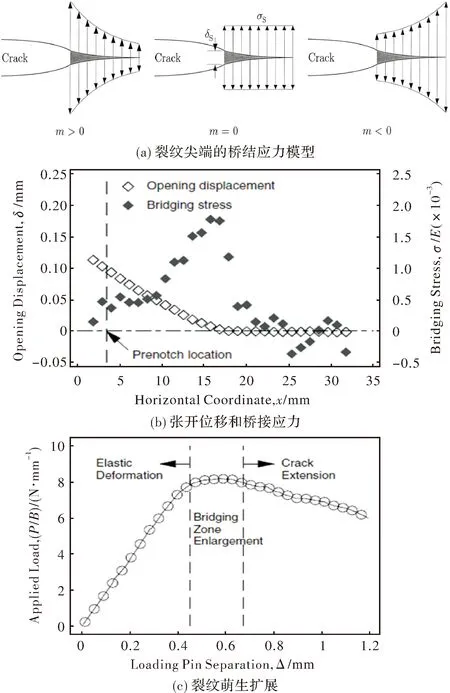
图3 PBX裂纹尖端的应力桥接现象Fig.3 Stress bridging junction phenomenon in crack tip of PBXs
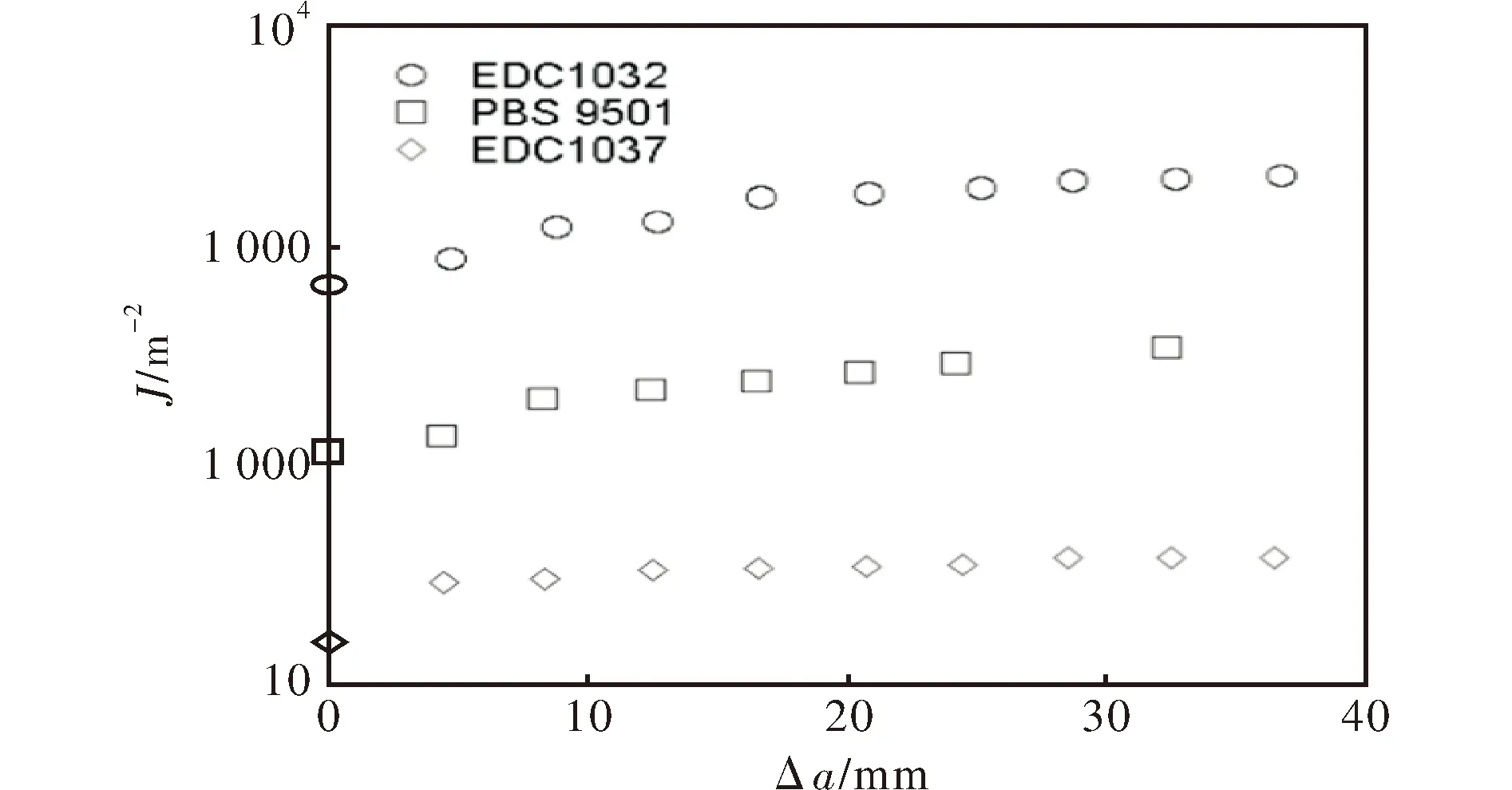
图4 PBX模拟材料J-积分阻力曲线Fig.4 J-integral resistance curves for PBX simulant materials
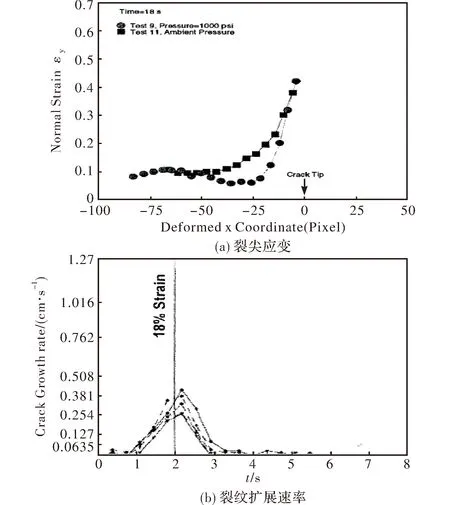
图5 固体推进剂裂尖应变与扩展速率Fig.5 Crack tip strain and propagation rate in solid propellant
3.3 动态加载下PBX断裂研究
动态加载下PBX材料的力学行为更加复杂,非线性的力学特性更加明显[45]。研究表明,PBX断裂韧性与加载率有一定的相关性。因此,动态加载下PBX材料断裂行为非常复杂。罗景润等[46]最早对PBX动态加载下断裂性能进行了系统性的研究。在Hopkinson压杆实验系统上建立动态断裂试验装置,在较高的加载速率下,对三点弯曲试件的动态应力强度因子进行研究,并分析了试件的动态断裂韧性(KID)和起裂时间。钟卫洲[47]基于罗景润建立的PBX动态断裂实验,对PBX线弹性动态断裂韧性进行数值模拟研究,模拟结果与实验结果相差较大。Zhou Z B等[48]也采用分离式霍普金森压杆动态加载技术,进行半圆盘三点弯曲断裂韧性测试实验。研究发现PBX模拟材料的动态断裂韧性与加载率有着很强的线性关系,如图6所示。陈荣等[49-50]提出一种脆性材料动态断裂性能研究的新方案,利用Hopkinson加载半圆盘三点弯曲试验,在一次试验中测量包括起裂韧度、平均断裂能、平均传播韧度和平均裂纹传播速度在内的4个断裂参数,PBX动态起裂韧度随着加载率的增加而增加。Long B等[51]对固体推进剂的动态断裂研究发现,动态断裂韧性对温度和应变率变化非常敏感,断裂韧性与应变之间存在简单的线性关系,如图7所示。基于实验结果的分析,给出了温度与应变率对断裂韧性的影响关系式。

图6 加载率对PBX模拟材料断裂韧性的影响Fig.6 Effect of loading rate on the fracture toughness of simulant materials
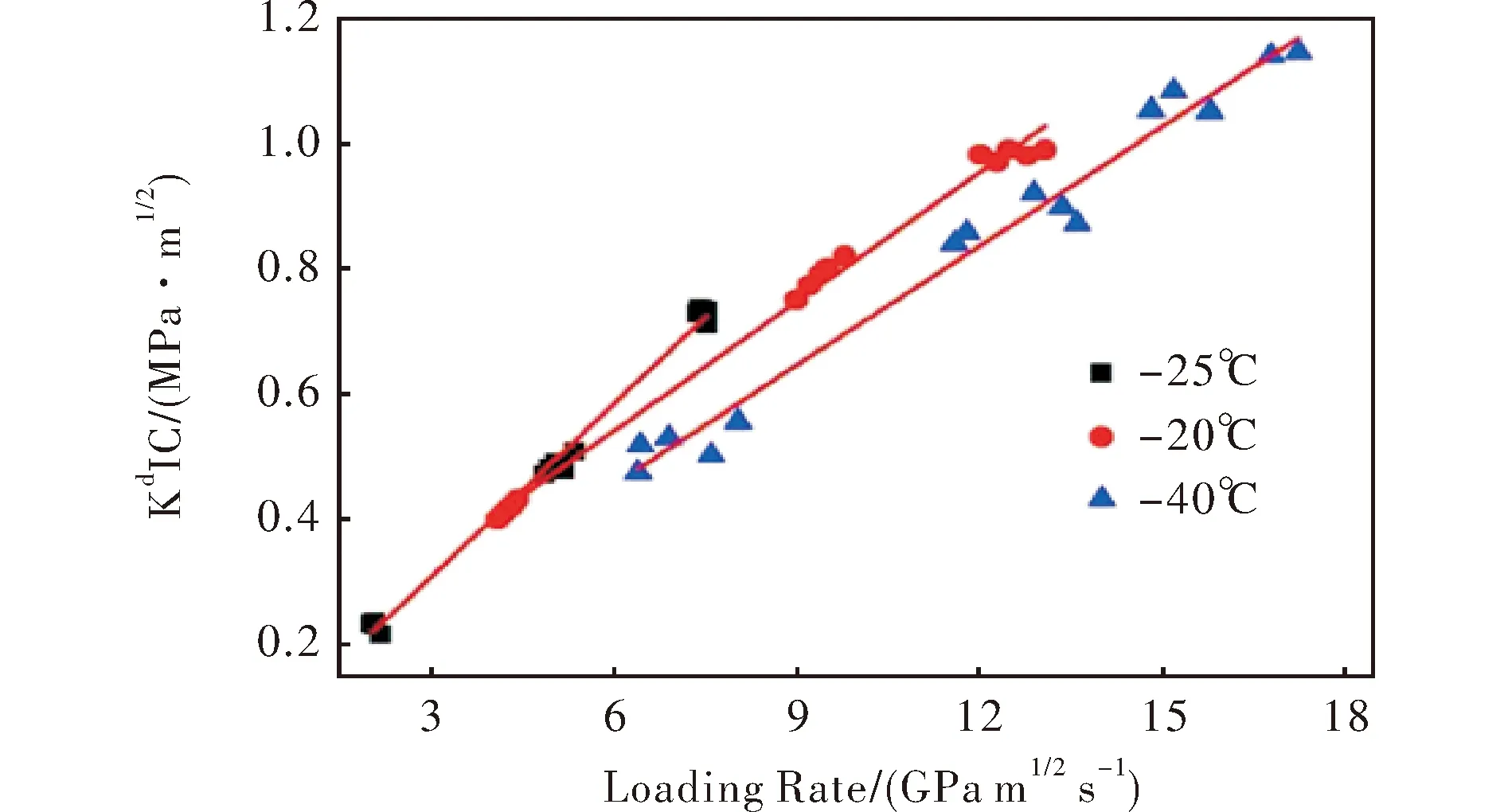
图7 温度加载率对固体推进剂断裂韧性的影响Fig.7 Effect of temperature loading rate on the fracture toughness of solid propellant
4 结束语
PBX作为一种高填充的含能颗粒复合材料,力学性能非常复杂。目前关于PBX研究多采用线弹性断裂力学方法(LEFM),仅对I型裂纹进行研究。对动态及复杂环境下PBX断裂行为还缺乏深入的了解。因此,认为以下4个方面是PBX断裂研究值得发展的方向:
(1)考虑炸药晶体构型、黏结剂强度、炸药晶体与黏结剂结合强度等因素,基于PBX材料配比的细观数值模拟,对PBX细观尺度上微裂纹萌生和扩展研究有着积极的意义。
(2)对于脆性较强的PBX,如炸药晶体体积分数很高的压装PBX,传统的线弹性断裂力学方法可以很好地解释其断裂行为,建议采用以断裂韧性为参数的断裂判据;对于塑性/黏弹性较强的PBX,如黏结剂体积分数较高的浇注型PBX,建议采用弹塑性/黏弹性断裂力学方法对其断裂行为进行研究,使用以裂纹尖端张开位移(CTOD)和J-积分为参数的断裂判据。
(3)温度和应变率对PBX材料的非线性力学特性有着非常大的影响。目前,动态加载PBX断裂过程监测是一个研究热点。
(4)加载方式的不同导致结构断裂模式差别巨大。由于PBX材料具有显著的拉压不对称特性,建立适合PBX材料特性的的复合型断裂准则值得深入研究。
[1] Guo H, Luo J R, Shi P A, et al. Research on the fracture behavior of PBX under static tension[J]. Defence Technology, 2014, 10(2): 154-160.
[2] Liu C, Thompson D G. Deformation and failure of a heterogeneous high explosive[J]. Philosophical Magazine Letters, 2012, 92(8): 352-361.
[3] Wiegand D A, Redingius B, Eills K, et al. Pressure and friction dependent mechanical strength-cracks and plastic flow[J]. International Journal of Solids and Structures, 2011, 48: 1617-1629.
[4] Tao J, Wang X F, Zhao S X. The crack formation mechanism of an aluminized polymer-bonded explosive under tension tress[J]. Journal of Energetic Materials, 2017, 35(2): 172-178.
[5] Zhou Z B, Chen P W. Comparative study of the fracture toughness determination of a polymer-bonded explosive simulant[J]. Engineering Fracture Mechanics, 2011, 78(17): 2991-2997.
[6] Liu C, Browning R. Fracture in PBX9501 at low rates[C]∥ 12th International Detonation Symposium. San Diego, CA:Office of Naval Research, 2002: 561-566.
[7] Zhou Z B, Chen P W, Huang F L, et al. Experimental study on the micromechanical behavior of a PBX stimulant using SEM and digital image correlation method[J]. Optics and Lasers in Engineering, 2011, 49: 366-370.
[8] Rae P J, Goldrein H T, Palmer S P J, et al. Quasi-static studies of the deformation and failure of β-HMX based polymer bonded explosives[J]. Proceedings of the Royal Society of London, Series A: Mathematical, Physical and Engineering Sciences, 2002, 458: 743-762.
[9] Li J L, Fu H, Tan D W. Fracture behavior investigation into a polymer-bonded explosive[J]. Strain, 2012, 48: 463-473.
[10] Yamaguchi I. A laser-speckle strain gauge[J]. Journal of Physics E-scientific Instruments, 1981, 14(1): 1270-1273.
[11] Peter W H, Ranson W F. Digital imaging technique in experiment stress analysis[J]. Optical Engineering, 1982, 21(3): 427-431.
[12] Liu C, Thompson D G. Crack initiation and growth in PBX 9502 high explosive subject to compression[J]. Journal of Applied Mechanics, 2014, 81(10): 1-13.
[13] 周忠彬, 陈鹏万, 黄风雷. PBX材料宏细观断裂行为的数字散斑相关法实验研究[J]. 高压物理学报, 2011, 25(1): 1-7. ZHOU Zhong-bin, CHEN Peng-wan, HUANG Feng-lei. An experimental study on the micro/macro fracture behavior of PBX using digital speckle correlation method[J]. Chinese Journal of High Pressure Physics, 2011, 25(1): 1-7 .
[14] Belmas R, Reynier P. Mechanical behavior of pressed explosives[C]∥International Symposium Energetic Materials Technology. Los Alamos: Los Alamos National Laboratory ,1994: 360-365.
[15] Peeters R L, Hackeet R M. Constitutive modeling of plastic-bonded explosives[J]. Experimental Mechanics, 1981, 21: 111-116.
[16] Rae P J, Goldrein H T, Palmer S J P, et al. Studies of the failure mechanisms of polymer-bonded explosives by high resolution moire interferometry and environmental scanning electron microscopy[C]∥11th International Detonation Symposium. Snowmass:Office of Naval Research, 1998: 235-239.
[17] 吴会民, 卢芳云, 卢力, 等. 三种含能材料力学行为应变率效应的实验研究[J]. 含能材料, 2004, 12(4): 227-230. WU Hui-min, LU Fang-yun, LU Li, et al. Experimental study on strain-rate effects of mechanical behaviors of energetic material[J]. Chinese Journal of Energetic Materials, 2004, 12(4): 227-230.
[18] 李俊玲, 付华, 谭多望, 等. PBX炸药的拉伸断裂损伤分析[J]. 爆炸与冲击, 2011, 31(6): 624-629. LI Jun-ling, FU Hua, TAN Duo-wang, et al. Fracture damage analysis of PBX[J]. Explosion and Shock Waves, 2011, 31(6): 624-629.
[19] Wiegand D A. Mechanical properties and mechanical failure of composite plastic bonded explosives and other energetic materials[C]∥11th International Detonation Symposium.Los Alamos: Los Alamos National Laboratory, 1998: 744-750.
[20] Gray Ⅲ G T, Idar D J, Blumenthal W R, et al. High- and low-strain rate compression properties of several energetic material composites as a function of strain rate and temperature[C]∥11th International Detonation Symposium. Los Alamos: Los Alamos National Laboratory, 1998: 76-83.
[21] Lanzerotti M Y, Pinto J. Fracture surface topography of TNT, composition B and octol[C]∥10th International Detonation Symposium. Boston:Office of Naval Research,1993: 190-198.
[22] 蔡宣明, 张伟, 魏刚, 等. PBX模拟材料动态力学响应及细观损伤模式[J]. 含能材料, 2014, 22(5): 658-663. CAI Xuan-ming, ZHANG Wei, WEI Gang, et al. Dynamic mechanics response and mesoscopic damage of a PBX simulant[J]. Chinese Journal of Energetic Materials, 2014, 22(5): 658-663.
[23] Liu Z W, Xie H M, Li K X, et al. Fracture behavior of PBX simulation subject to combined thermal and mechanical loads[J]. Polymer Testing, 2009, 28: 627-635.
[24] 温茂萍, 庞海燕, 田勇, 等. PBX平面应变断裂韧度随温度的变化规律[J]. 火炸药学报, 2005, 28(3): 63-65. WEN Mao-ping, PANG Hai-yan, TIAN Yong, et al. Regulations of plane strain fracture toughness of PBX changed with temperatures[J]. Chinese Journal of Explosives & Propellants (Huozhayao Xuebao), 2005,28 (3): 63-65.
[25] Griffith A. The phenomena of rupture and flow in solids[J]. Philosophical Transaction of the Royal Society of London, 1920, A221: 163-198.
[26] Irwin G R. Fracture dynamics. Fracture of metals[J]. American Society Metal Transaction Quarterly, 1948, 40(A): 147-166.
[27] Hoffman D M. Fatigue of LX-14 and LX-19 plastic bonded explosives[J]. Journal of Energetic Materials, 2000, 18(1): 1-27.
[28] Kinloch A J, Gledhill R A. Propellant failure: a fracture-mechanics approach[J]. Journal of Spacecraft, 1981, 18(4): 333-337.
[29] Palmer S J P, Field J E, Huntley J M. Deformation, strengths and strains of failure of polymer bond explosives[J]. Proceedings of the Royal Society of London Series: Mathematical Physical and Engineering Sciences, 1993, A440(1909): 399-419.
[30] 罗景润, 张寿齐, 李大红, 等. 高聚物粘结炸药断裂韧性实验研究[J]. 爆炸与冲击, 2000, 20(4): 338-342. LUO Jing-run, ZHANG Shou-qi, LI Da-hong, et al. Experimental investigation on the fracture character of PBX[J]. Explosion and Shock Waves, 2000, 20(4): 338-342.
[31] 温茂萍, 马丽莲, 田勇, 等. 高聚物粘结炸药平面断裂韧度实验研究[J]. 火炸药学报, 2001(2): 16-21. WEN Mao-ping, MA Li-lian, TIAN Yong, et al. Experimental study on the plane strain fracture toughness of high polymer bonded explosive[J]. Chinese Journal of Explosives & Propellants, 2001,24(2): 16-21.
[32] Li M, Zhang J, Xiong C Y. Fracture analysis of plastic bonded explosive by digital image correlation technique[C]∥International Conference on Experimental Mechanics.Beijing:Proceeding of SPIE,2002, 4537: 107-110.
[33] Liu C. Fracture of the PBX 9501 high explosive[C]∥ Shock Compression of Condensed Matter. Portland Oregon:AIP Conference Proceedings,2003: 786-791.
[34] Tan H, Liu C, Huang Y, et al. The cohesive law for the particle/matrix interface in high explosive[J]. Journal of the Mechanics and Physics of Solids, 2005, 53(8): 1892-1917.
[35] Tan H, Huang Y, Liu C, et al. The uniaxial tension of particulate composite materials with nonlinear interface debonding[J]. International Journal of Solids and Structures, 2007, 44: 1809-1822.
[36] Liu C, Stout M G, Asay B W. Stress bridging in a heterogeneous material[J]. Engineering Fracture Mechanics, 2000, 67(1): 1-20.
[37] Williamson D M, Palmer S J P, Proud W G. Fracture studies of PBX stimulant materials[C]∥Shock Compression of Condensed Matter. Baltimore Maryland:AIP Conference Proceedings,2006: 829-832.
[38] Rice J R. A patch independent integral and the approximate analysis of strain concentrations by notches and cracks[J]. Journal of Applied Mechanics, 1968, 35(2): 379-386.
[39] Liu C, Cady C M, Rae P J, et al. On quantitative measurement of fracture toughness in high explosive and mock materials[C]∥14th International Detonation Symposium. Coeur d’Alene: Office of Naval Research, 2010: 347-355.
[40] Jr L F, Gagliardi F J, Cunningham B J, et al. Measure of quasi-static toughness and fracture parameters for mock explosive and insensitive high explosive LX-17[C]∥14th International Detonation Symposium. Coeur d’Alene: Office of Naval Research, 2010: 580-587.
[41] Liu C, Thompson D G, Lovato M L, et al. Macroscopic crack formation and extension in pristine and artificially aged PBX 9501[C]∥14th International Detonation Symposium. Coeur d’Alene: Office of Naval Research, 2010: 1247-1256.
[42] Liu C T. Crack growth behavior in a solid propellant[J]. Engineering Fracture Mechanics, 1997, 56(1): 127-135.
[43] Liu C T. The Effect of micro damage on time-dependent crack growth in a composite solid propellant[J]. Mechanics of Time-Dependent Materials, 1997, 1(1):123-136.
[44] 周广盼. 含缺陷固体火箭发动机推进剂断裂力学行为研究[D]. 南京: 南京理工大学, 2013. ZHOU Guang-pan. Study on the fracture mechanics behavior of solid rocket motor propellant containing defects[D]. Nanjing: Nanjing University of Science and Technology, 2013.
[45] 周栋, 黄凤雷, 姚惠生. PBX粘弹性损伤本构关系研究[J]. 北京理工大学学报, 2007, 27(11): 945-947. ZHOU Dong, HUANG Feng-lei, YAO Hui-sheng. Study on the visco-elastic constitutive model of PBX[J]. Transactions of Beijing Institute of Technology, 2007,27(11): 945-947.
[46] 罗景润. PBX的损伤、断裂及本构关系研究[D]. 绵阳: 中国工程物理研究院, 2001. LUO Jing-run. Study on damage, fracture and constitutive relation of PBX[D]. Mianyang: China Academy of Engineering Physics, 2001.
[47] 钟卫洲. 三点弯曲试样动态断裂的数值模拟与实验研究[D]. 绵阳: 中国工程物理研究院, 2004. ZHONG Wei-zhou. Numerical simulation and experimental research on dynamic fracture of three-point bending specimen[D]. Mianyang: China Academy of Engineering Physics, 2004.
[48] Zhou Z B, Chen P W, Huang F L. Study on dynamic fracture and mechanical properties of a PBX simulant by using dic and SHPB method[C]∥Shock Compression of Condensed Matter. Chicago Illinois:AIP Conference Proceedings, 2012, 1426: 665-668.
[49] 陈荣. 一种PBX炸药试样在复杂应力动态夹杂下的力学性能实验研究[D]. 长沙: 国防科学技术大学, 2010. CHEN Rong. Experimental studies on mechanical properties of a PBX under various dynamic loading conditions[D]. Changsha: National University of Defense Technology, 2010.
[50] Chen R, Xia K, Dai F, et al. Determination of dynamic fracture parameters using a semi-circular bend technique in split Hopkinson pressure bar testing[J]. Engineering Fracture Mechanics, 2009, 76(9): 1268-1276.
[51] Long B, Chang X L, Hu K. Effects of temperature and strain rate on the dynamic fracture properties of HTPB propellant[J]. Propellants, Explosives, Pyrotechnics, 2015, 40: 479-483.
Researoh Progress on Fracture Mechanical Behaviors of PBX
DONG Tian-bao,WEI Xing-wen,ZHANG Wei-yao, GAN Hai-xiao
(Institute of Chemical Materials, CAEP, Mianyang Sichuan 621900, China)
In terms of the commonly used experimental methods, mesoscopic fracture modes, macroscopic fracture mechanics and dynamical fracture, the research works on the fracture mechanical behaviors of PBX at home and abroad were reviewed. The macroscopic and mesoscopic-fracture features and characterization methods of PBX were introduced. The effects of mesostructure, mechanical feature, temperature and loading rate on the fracture behavior of PBX were discussed. It is pointed out that the research on PBX mesocrack initiation and extension, macroscopic fracture initiation mechanism and the crack extension behavior under dynamical loading of PBX should be carried out, and the composite fracture criterion fitted the characteristics of PBX should be established. With 51 references.
solid mechanics; PBX; meso-scopic fracture; fracture mechanics;polymer bonded explosive
10.14077/j.issn.1007-7812.2017.04.001
2016-03-21;
2016-05-09
中国工程物理研究院化工材料研究所创新基金(2015KJCX07)
董天宝(1989-),男,研究实习员,从事含能材料力学性能研究。E-mail:dongtianbao@caep.cn
韦兴文(1977-),男,副研究员,从事炸药及高分子材料的力学性能研究。E-mail:weixw@caep.cn
TJ55;O346.1
A
1007-7812(2017)04-0001-07

